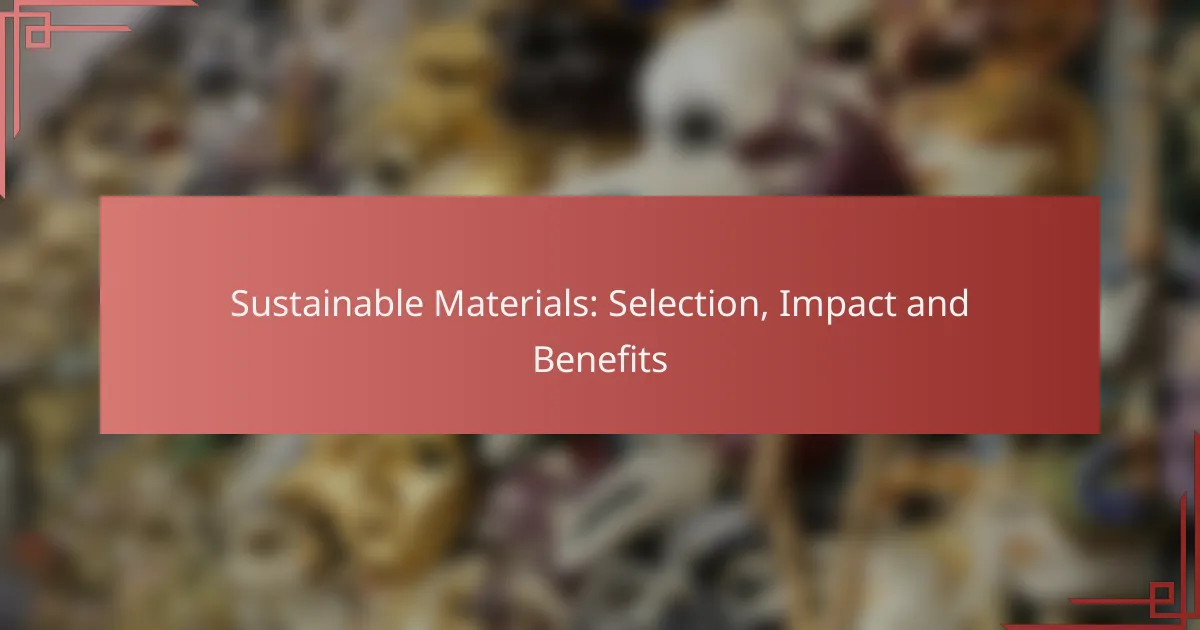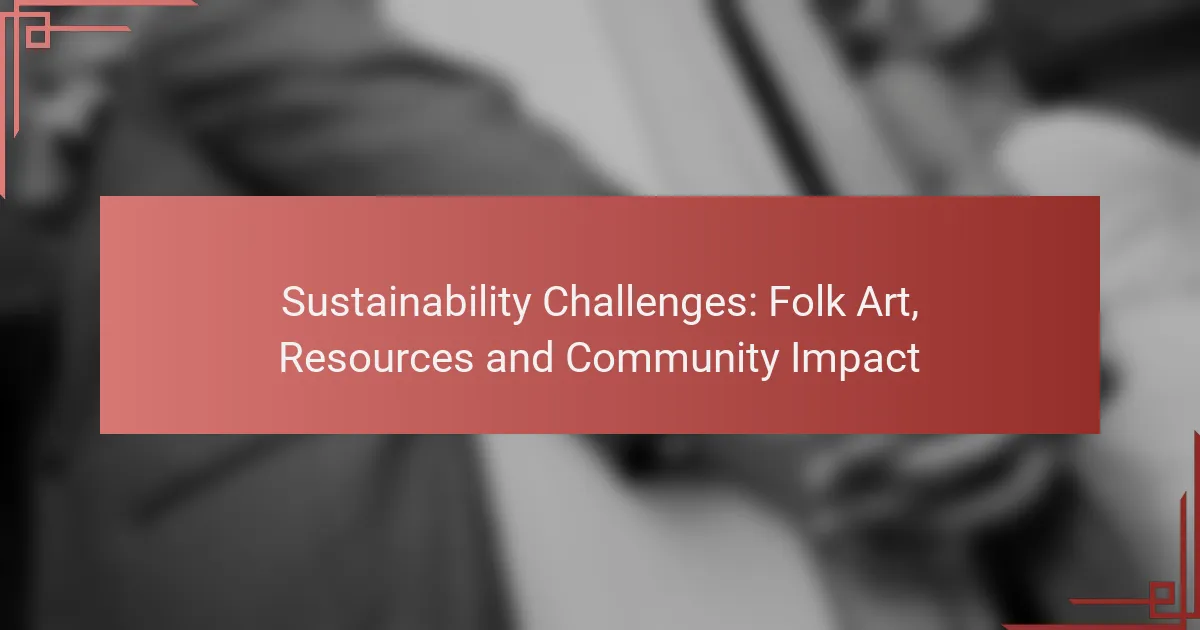Sustainable materials play a crucial role in modern construction by minimizing environmental impact and promoting resource efficiency. Options such as bamboo, recycled steel, and reclaimed wood not only reduce pollution but also enhance energy efficiency and indoor air quality. By choosing these materials, we support ecological balance and contribute to a healthier planet for future generations.

What are the best sustainable materials for construction?
The best sustainable materials for construction include bamboo, recycled steel, hempcrete, reclaimed wood, and low-VOC paints. These materials not only reduce environmental impact but also enhance energy efficiency and indoor air quality.
Bamboo
Bamboo is a rapidly renewable resource that grows significantly faster than traditional timber, making it an excellent choice for sustainable construction. Its strength-to-weight ratio is comparable to steel, which allows for innovative structural designs.
When using bamboo, consider sourcing it from certified plantations to ensure sustainability. Additionally, treatments may be necessary to protect against pests and moisture, which can affect its longevity.
Recycled steel
Recycled steel is produced by reprocessing scrap metal, significantly reducing energy consumption compared to producing new steel. This material is highly durable and can be used in various structural applications, from beams to roofing.
When selecting recycled steel, check for certifications that confirm its recycled content. Using recycled steel can contribute to LEED certification points, enhancing the sustainability profile of a building project.
Hempcrete
Hempcrete is a biocomposite material made from hemp hurds and lime, providing excellent insulation and moisture regulation. It is lightweight and has a low carbon footprint, making it ideal for eco-friendly construction.
Hempcrete is not load-bearing, so it is typically used in conjunction with a structural frame. Ensure that the hemp is sourced from local farms to minimize transportation emissions and support local economies.
Reclaimed wood
Reclaimed wood is salvaged from old buildings, furniture, or other sources, giving it a second life while reducing deforestation. This material often has unique character and history, adding aesthetic value to construction projects.
When using reclaimed wood, inspect it for quality and potential contaminants. Proper treatment and finishing can enhance its durability and longevity, making it a practical choice for both structural and decorative elements.
Low-VOC paints
Low-VOC (volatile organic compounds) paints are formulated to minimize harmful emissions, improving indoor air quality. These paints are available in a variety of colors and finishes, making them suitable for both residential and commercial applications.
When selecting low-VOC paints, look for certifications like Green Seal or GREENGUARD to ensure compliance with environmental standards. Proper ventilation during application can further enhance safety and comfort in indoor spaces.

How do sustainable materials impact the environment?
Sustainable materials significantly reduce environmental harm by minimizing resource depletion and pollution. Their use promotes ecological balance and supports a healthier planet.
Reduced carbon footprint
Sustainable materials often have a lower carbon footprint compared to conventional options. For example, materials like bamboo and recycled metals require less energy to produce, leading to fewer greenhouse gas emissions.
When selecting materials, consider their entire lifecycle, from extraction to disposal. Opting for locally sourced sustainable materials can further decrease transportation emissions, enhancing their overall environmental benefits.
Lower energy consumption
The production of sustainable materials typically consumes less energy than traditional materials. For instance, using reclaimed wood or recycled plastics can cut energy use by up to 50% during manufacturing.
To maximize energy savings, look for certifications such as Energy Star or similar local standards. These labels indicate products that meet energy efficiency criteria, ensuring that you are making an informed choice.
Waste reduction
Sustainable materials contribute to waste reduction by promoting recycling and reuse. For example, products made from recycled content help divert waste from landfills and reduce the demand for virgin materials.
Implementing a circular economy approach can further enhance waste reduction efforts. This involves designing products for longevity and recyclability, encouraging consumers to return items at the end of their life cycle for repurposing or recycling.

What are the benefits of using sustainable materials?
Using sustainable materials offers numerous advantages, including reduced environmental impact and improved health outcomes. These materials often lead to better resource management and can enhance the overall quality of life for users.
Improved indoor air quality
Sustainable materials typically emit fewer volatile organic compounds (VOCs) compared to conventional options. This results in healthier indoor environments, reducing the risk of respiratory issues and allergies.
Examples include low-VOC paints, natural fiber carpets, and formaldehyde-free cabinetry. Choosing these materials can significantly enhance air quality, making spaces more comfortable and safer for occupants.
Enhanced durability
Many sustainable materials are designed to last longer than traditional alternatives, which can lead to lower maintenance and replacement costs. For instance, bamboo flooring is not only eco-friendly but also highly durable, resisting wear and tear effectively.
Investing in durable sustainable materials means fewer resources are needed for repairs or replacements over time, contributing to a more sustainable lifecycle. This durability can be particularly beneficial in high-traffic areas or harsh climates.
Cost savings over time
While the initial investment in sustainable materials may be higher, the long-term savings can be substantial. These materials often require less energy for heating and cooling, leading to lower utility bills.
Additionally, their durability reduces the need for frequent replacements. Homeowners can expect to save hundreds to thousands of dollars over the lifespan of a building by choosing sustainable options, making it a financially sound decision.

What criteria should be considered when selecting sustainable materials?
When selecting sustainable materials, key criteria include their environmental impact, sourcing practices, and compliance with recognized standards. Evaluating these factors helps ensure that materials contribute positively to sustainability goals while minimizing harm to ecosystems.
Life cycle assessment
Life cycle assessment (LCA) evaluates the environmental impact of a material from extraction through production, use, and disposal. This comprehensive approach helps identify stages where improvements can be made, such as reducing energy consumption or waste generation. Consider using LCA tools to compare different materials and their overall sustainability profiles.
When conducting an LCA, focus on metrics like carbon footprint, water usage, and resource depletion. For instance, materials with lower embodied energy are often preferable, as they require less energy to produce and transport.
Local sourcing
Local sourcing involves obtaining materials from nearby suppliers to reduce transportation emissions and support local economies. This practice not only minimizes the carbon footprint associated with long-distance shipping but also fosters community resilience and sustainability. Prioritize materials sourced within a certain radius, such as 100-200 miles, to maximize these benefits.
Additionally, local sourcing can lead to shorter supply chains, enhancing transparency and traceability. Engage with local suppliers to understand their practices and ensure they align with your sustainability goals.
Certifications and standards
Certifications and standards provide assurance that materials meet specific environmental and social criteria. Look for well-known certifications such as FSC (Forest Stewardship Council) for wood products or GOTS (Global Organic Textile Standard) for textiles. These labels indicate that materials are sourced responsibly and produced with minimal environmental impact.
When evaluating certifications, consider the credibility and scope of the standards. Some certifications may focus on specific aspects, such as organic farming or fair labor practices, while others provide a broader assessment of sustainability. Always verify that the certifications are relevant to your material choices and align with your sustainability objectives.

How do sustainable materials compare in pricing?
Sustainable materials often have higher initial costs compared to conventional options, but they can lead to significant long-term savings. Factors such as durability, energy efficiency, and reduced environmental impact contribute to their overall value.
Initial costs vs. long-term savings
While the upfront costs of sustainable materials may be higher—sometimes by 10-30%—their longevity and efficiency can offset these expenses over time. For instance, energy-efficient insulation may cost more initially but can reduce heating and cooling bills significantly, leading to savings that accumulate over several years.
Investing in sustainable materials can also enhance property value. Homes built with eco-friendly materials often attract buyers willing to pay a premium for energy efficiency and lower maintenance costs.
Price variations by region
The pricing of sustainable materials can vary widely based on geographic location due to factors such as local availability, transportation costs, and regional regulations. In urban areas, for example, sustainable options may be more accessible but also pricier due to demand.
In Europe, the push for green building standards has led to a wider range of sustainable materials, often at competitive prices. In contrast, regions with less emphasis on sustainability may have limited options, potentially increasing costs due to scarcity.



